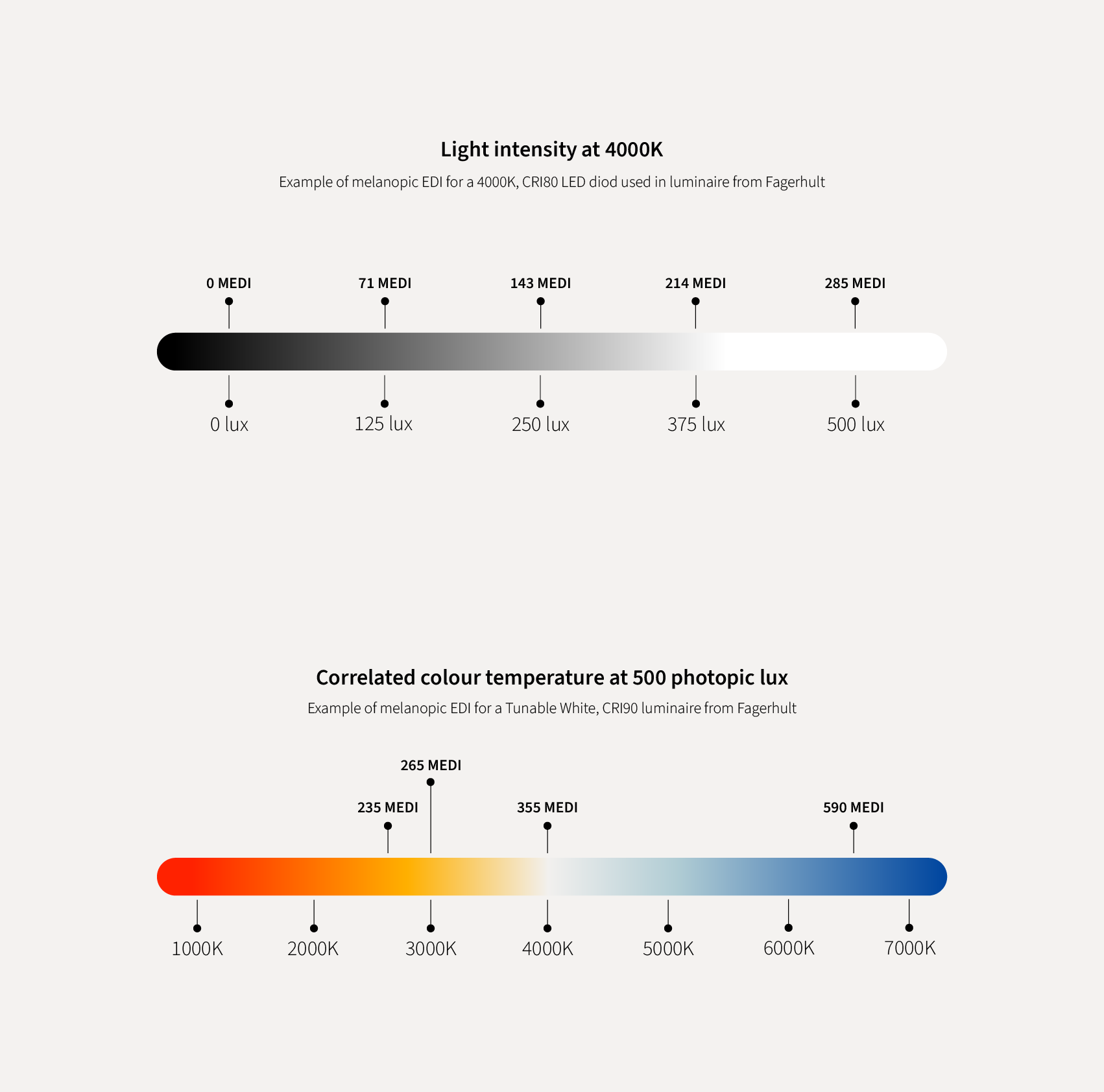A new way to report the biological impact of lighting
Melanopic Ratio is the solution for those who want to plan, own, or manage facilities with lighting that takes into account human biological needs.

A factor in light planning
Melanopic Ratio (Melanopic Daylight Efficacy Ratio – MDER) is a factor used in light planning to calculate the lighting installation's melanopic lux. Since daylight is what regulates the human circadian rhythm, it is also the reference for Melanopic Ratio. The reference is called D65 SPD and is the International Commission on Illumination's "CIE Standard Illuminant." It resembles daylight's colour temperature at 6 500 kelvin and is a cool, white light. Based on the light source, that is the diode's, similarity to CIE D65, it is possible to specify the lighting luminaire's Melanopic Ratio. Melanopic Ratio is a comparison between the spectral distributions of the light source and CIE D65.
How melanopic ratio works
When you know the luminaire's Melanopic Ratio, it becomes easy to calculate the lighting installation's melanopic light intensity. This makes it possible to create a lighting installation that meets both our photopic (visual) light intensity and melanopic (biological) light intensity needs. Melanopic lux is calculated by multiplying the lighting installation's photopic light intensity by the luminaire's Melanopic Ratio (MDER). The value to be achieved is called Melanopic Equivalent Daylight Illuminance (MEDI) and corresponds to a recommended value of 250 lux vertically to the eye. A luminaire with a lower Melanopic Ratio requires higher photopic light intensity to achieve desired levels, and vice versa. Luminaires with light sources of high intensity and higher colour temperature often have a higher Melanopic Ratio.
Calculation example
The amount and spectral composition of light affect the amount of melanopic lux. These are calculated by multiplying the light source's photopic light intensity by the luminaire's Melanopic Ratio (MDER).
- In the graph "Light intensity at 4000 K", levels of melanopic lux (MEDI) are shown at different photopic lux levels for an example diode with an MDER of 0.57.
- In the graph "Correlated colour temperature at 500 photopic lux", levels of melanopic lux are shown at different colour temperatures at a constant light intensity of 500 photopic lux, for an example luminaire with Tunable White. Here, MDER differs at different colour temperatures: 2700 K – MDER 0.47, 3000 K - MDER 0.53, 4000 K – MDER 0.71, 6500 K – MDER 1.18.
Fagerhult follows CIE's recommendations
Based on research results, CIE has chosen to introduce the concepts of melanopic DER (MDER) and melanopic EDI (MEDI) in the upcoming global standard, but there are no mandatory values. In other words, it's up to each manufacturer whether they want to report their values or not. We never compromise on the user's experience and health. That's why we choose to report Melanopic Ratio (MDER) at the diode level per luminaire, so that it's easy to calculate Melanopic EDI.
